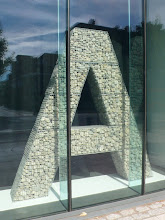
The plan worked in the end and the book incorporates end papers made out of bits of wallpaper (liberated from Tottenham Hale B&Q sample rolls); glassine paper covering up full page photos of participants' favourite possessions; perfumed drawer liners printed on the reverse; and, three different types of envelopes that hold old photographs, stamps, cigarette cards and letters. These design interventions work in tandem with the narrative and, through the use of non-traditional media and objects, engage the reader through touch and smell, hopefully triggering their own memories of possessions, home and family members.










The book was bound at a traditional bookbinders with a buckram cover and embossed silver lettering. The idea is that the traditional format hides the non-traditional 'innards', effectively acting as a front door. When you open the 'front door', you are faced with vibrantly patterned wallpaper end pages—as if you have stepped into someone's house—moving from outside to inside, and to a 'close up' view of place.





The Food Miles book, of which I am currently posting some excerpts, ended up over 100 pages long, so when it came to pagination a prototype was a must.

Essentially this felt like creating a similar kind of mapping diagram, but doing it in three dimensions. As the book has a few french folded, perforated pages, a gatefold section, and a small book within the book hidden within another french fold, it was all quite complicated to work out. The prototype saved time, printing ink and paper that's for sure. I have just had the book perfect bound at LCC, and will post about the design when I have posted a few more excerpts and actually taken some shots of the book.
I think mapping or prototyping is a bit like writing in a way, as it enables one to put initial theories or concepts into practice. Coffey & Atkinson (1996: 109) suggest that writing 'deepens our analytical endeavour' and I would suggest prototyping works similarly, by creating a physical, permanent form that enables reflection and revision. Like writing, and walking for that matter, prototyping also 'slows thought and perception down' effectively forcing one 'to perceive actively, to make connections, to articulate thoughts and feelings which would otherwise remain at a pre-reflective or practical level of consciousness' (Tilley 2004: 223-4, see also Yee 2007: 9). In these examples the material form of the work not only aids this reflection about the work itself, but also, in a sense, re-sites one in place and allows further reflection on one's experience of place.
Richardson (2005: 923) suggests that writing could be considered a 'method of inquiry' itself, rather than just a 'mode of telling'.
Writing is also a way of 'knowing'—a method of discovery and analysis. By writing in different ways, we discover new aspects of our topic and our relationship to it. Form and content are inseparable.
There seem clear parallels here with the idea of design as a method of inquiry, or 'designerly ways of knowing' (Cross 2007) and both Burdick (1995: np) and Bruinsma (2001: 1) have likened design to writing. In fact if one were to substitute the word 'writing' in Richardson's quote with the word 'design', the statement would not only make sense, but would sum up well the approach of this practice-led research.
However, when it comes to the final production process, I find this far more stressful than anything else—even writing the thesis—but I'm not sure why. In these digital times it isn't as if the work can't be reprinted. You might have thought I could find some of the production therapeutic—cutting away the elements of the Edinburgh old town book, for example—but I don't.

It either feels like an RSI inducing endless task with the scalpel, or a task that teeters on being just a slip away from a severed finger or a need to start again. Luckily, I think this stress enables me to concentrate more and neither was there a severed finger nor a ruined book. The Stuff book, on the other hand, had to redone three times by the bookbinders, with the first two not being cropped correctly and some pages not bound in sufficiently well. They didn't seem at all stressed by this—maybe I should take a leaf out of their book...


3 comments:
I enjoyed browsing my time in your post. Thanks for sharing this one. I really appreciate it.
Design Degrees
wow! this is great! graphic designing is really a creative skill of an individual with the additional skill of computer technology..
The best way to do this is to design your site in terms of percentage and not pixels
Post a Comment